MRNA VS. CONVENTIONAL VACCINES
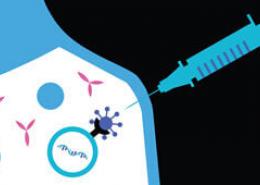
Working Together to Empower Women

Reducing Health Disparities in Latino Communities

Pfizer Women’s Resource Group
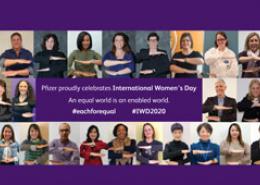
Universal vs. Single Payer Healthcare

It was December 15, 2020 when Melissa French got the message: Pfizer needed large quantities of something called a cationic lipid that was critical to the COVID-19 vaccine. “This isn’t an everyday lipid that’s readily available,” says French, who is a Project Manager with Pfizer Global Supply, and handles lipid production at a facility in Kalamazoo, Michigan. She was being asked to lead a team in producing large amounts of this important raw material.
The call wasn’t a complete surprise. A number of her friends and colleagues had been working on the vaccine for several months, and French was prepared to leap at the opportunity when and if it arose. But first, she had to deliver some challenging news to her family, including her partner, who also works at Pfizer, and their four children under age 11. “It was right before Christmas, and I’m like, I think Christmas is cancelled this year,” recalls French.
Built to scale
The process to create the lipid had already been devised by a Pfizer research and development facility in Groton, Conn. The team there knew the Michigan manufacturing facility—which was concurrently working hard at other aspects of vaccine production—had the right specialized equipment for making the lipids and had the space “ and ability to produce the quantities needed. Now, it was just a matter of assembling the right team.
and ability to produce the quantities needed. Now, it was just a matter of assembling the right team.
French has been working at Pfizer for 27 years, ever since she was studying biology at Western Michigan University. Across those decades, she’d worked in a number of different areas and met scores of colleagues at Pfizer. Now, she drew upon that experience to pull together a top-notch team who could complete in a matter of weeks a project that could normally take at least six months.
“This wasn’t just any project. This was, on paper, an impossible project that we were being asked to do in the timeline that we knew we needed to do it in,” says French. “Picking the right people and knowing we could do this together was key.”
All told, she assembled a team of 50 people across 20 different areas, including operations, product technology, quality assurance, procurement and planning, to prepare for what’s known as a “tech transfer” from the Groton facility. That means that they would adopt a comparable process and components—including equipment and ingredients—in Michigan that were already being used in Connecticut, to create the cationic lipid the Pfizer-BioNTech vaccine depends on.
This tiny fat glob, known as a functional lipid, is actually one of four lipids that make up the lipid nanoparticles that go into the vaccine. Without these lipid nanoparticles, in fact, there could be no Pfizer-BioNTech mRNA vaccine. That’s because mRNA, which is the genetic material that teaches our cells to make the protein that will help our immune systems produce antibodies that helps to protect us from COVID-19, is incredibly delicate. It needs structure and protection to do its job in the human body, and lipids provide that. The cationic lipid, in particular, is the one that does the protecting. “It’s the primary component of the lipid nanoparticle, so it was needed in much larger quantities,” says French. If Pfizer were to manufacture the cationic lipid, itself, it would become an important component of building a reliable supply chain—and helping to protect against potential shortages—for vaccine production in the future.
Manufacturing the lipid involves multiple chemical reactions and a purification step. To expedite the timeline, the team found ways to consolidate steps when possible. “Oftentimes, you generate each chemical reaction and then ‘isolate’ or package the part of the product we need, step by step, reaction by reaction. And you do another reaction and you isolate the product. We found a way to keep the product in the tank and not have to package it between each reaction, which helped to expedite the process,” she says.
The first batch was completed just nine weeks after Kalamazoo was selected as the site. French credits her colleagues for pulling off a task that, in the early days, seemed insurmountable. “I can’t comment enough on the team I had. Every one of them was dedicated. You’d get online at night to check emails or to do something and everybody’s systems indicated they were still online at 11 p.m. It was just such an amazing effort,” she says.
Making it count
As of July 2021, the Michigan facility was making nearly 20 kilograms of cationic lipids a week, which is enough for millions of doses of the vaccine. French, who’s accustomed to being deep in the details of a manufacturing project, far away from the limelight, is still getting used to the attention that her unit has received. In February 2021, President Joe Biden toured the facility along with different national news outlets and members of Pfizer’s executive leadership team. She’s not one to let it go to her head, though, especially when there’s still work to be done. “We continue to find ourselves with new challenges. And we’re looking to optimize and maybe get new equipment to do it faster and make more,” she says.
At home, the four kids are still too young to receive the vaccine. But they know their mom played an important role in it. And they understand, as much as they can: why her office door was often closed to them (unless there was an emergency) and why Christmas looked a little different last year. “We told them, ‘The more Mom can work on this, the quicker we can get back to normal,’” says French.
But parental challenges and all, when French looks back, she’s in awe of what her team has been able to do. “Sometimes you don’t get time to think about the emotional pieces of it. But when you do, it’s humbling to be a part of something that is changing how we’re living. And not just my life, but everybody’s,” she says.
And she knows, without a doubt, that were she to do it over again, she wouldn’t change a thing. “The long hours were absolutely worth it. Absolutely in 27 years, it’s the most meaningful thing I’ve ever worked on. Without question.”
Read more from the Shot of a Lifetime series:
- Shot of a Lifetime: How Pfizer and BioNTech Developed and Manufactured a COVID-19 Vaccine in Record Time
- Shot of a Lifetime: How Two Pfizer Manufacturing Plants Upscaled to Produce the COVID-19 Vaccine in Record Time
- Shot of a Lifetime: How Pfizer is Partnering with CMOs to Increase COVID-19 Vaccine Production and Reach More People
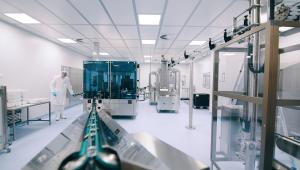
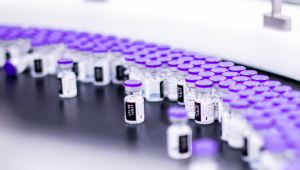
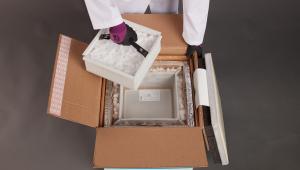

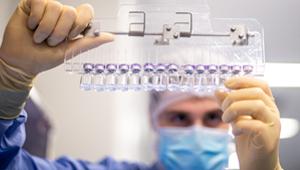


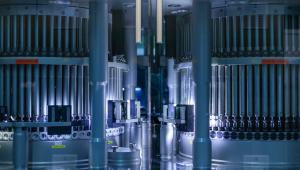
Source: Read Full Article
